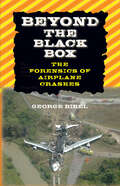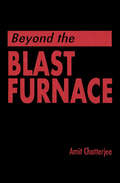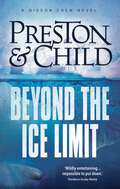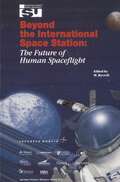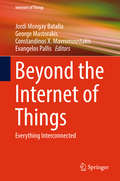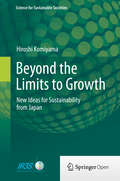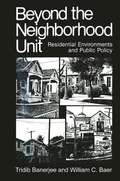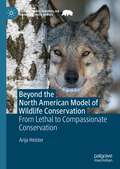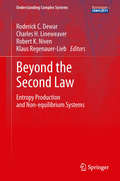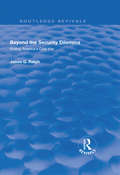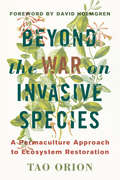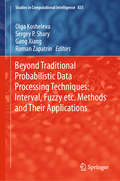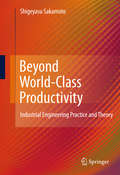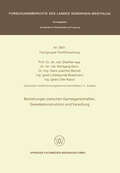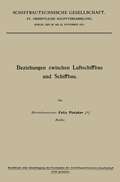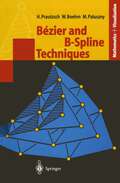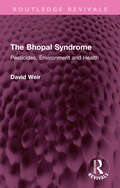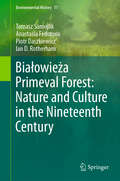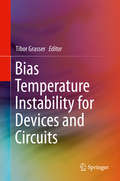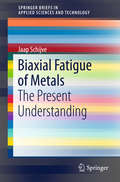- Table View
- List View
Beyond the Black Box: The Forensics of Airplane Crashes
by George BibelThe black box is orange—and there are actually two of them. They house the cockpit voice recorder and the flight data recorder, instruments vital to airplane crash analyses.But accident investigators cannot rely on the black boxes alone. Beginning with the 1931 Fokker F-10A crash that killed legendary football coach Knute Rockne, this fascinating book provides a behind-the-scenes look at plane wreck investigations. Professor George Bibel shows how forensic experts, scientists, and engineers analyze factors like impact, debris, loading, fire patterns, metallurgy, fracture, crash testing, and human tolerances to determine why planes fall from the sky—and how the information gleaned from accident reconstruction is incorporated into aircraft design and operation to keep commercial aviation as safe as possible.
Beyond the Blast Furnace
by Amit ChatterjeeThis unique book presents an in-depth analysis of all the emerging ironmaking processes, supplementing the conventional blast furnace method. Various processes for producing solid and liquid iron are discussed, including important features such as process outline, techno-economics, and process fundamentals. The present global status of each process is examined, projections for the future are made, and processes are compared.Beyond the Blast Furnace is valuable reading for process developers, because it gives them a complete picture of various process options. Conventional iron- and steelmakers as well as researchers and practitioners working in the area of alternative processes of ironmaking will also benefit from this ready reference. The book is an ideal text for undergraduate and postgraduate students in metallurgy.
Beyond the Blast Furnace
by Amit ChatterjeeThis unique book presents an in-depth analysis of all the emerging ironmaking processes, supplementing the conventional blast furnace method. Various processes for producing solid and liquid iron are discussed, including important features such as process outline, techno-economics, and process fundamentals. The present global status of each process is examined, projections for the future are made, and processes are compared.Beyond the Blast Furnace is valuable reading for process developers, because it gives them a complete picture of various process options. Conventional iron- and steelmakers as well as researchers and practitioners working in the area of alternative processes of ironmaking will also benefit from this ready reference. The book is an ideal text for undergraduate and postgraduate students in metallurgy.
Beyond the Ice Limit (Gideon Crew #4)
by Douglas Preston Lincoln Child60° SOUTH: NOTHING BUT SEA, ICE AND UNFETTERED STORMS. BUT TWO MILES DOWN, SOMETHING IS STIRRING. Five years ago, Eli Glinn led a mission to recover a 25,000-ton meteorite – the largest ever discovered – from a remote island off the coast of South America. It ended in disaster when their ship foundered and broke apart in a vicious storm. But now, two miles down in dark Antarctic waters, something is growing. A vast, grotesque structure is simultaneously reaching up towards the waves and burrowing deep into the sea floor. Eli Glinn's worst fear has been realised. He has no choice but to return to the Southern Ocean and attempt to annihilate an entity that threatens the existence of the planet. But, as he will discover, the entity has no intention of going quietly.
Beyond the International Space Station: Proceedings of an International Symposium, 4–7 June 2002, Strasbourg, France (Space Studies #7)
by M. RycroftY. Fujimori, Symposium Programme Committee Chair, and Faculty Member, International Space University e-mail: fujimori@isu. isunet. edu M. Rycroft, Faculty Member, International Space University e-mail: rycroft@isu. isunet. edu Building on the foundations provided by the International Space Station, now partially constructed and already in use in low Earth orbit, what will be the future directions of human spaceflight? This was the key question discussed from many viewpoints - technical, entrepreneurial, governmental, legal - at the seventh Annual Symposium held in Strasbourg, France, early in June 2002. Many ideas on the "whys" and the "hows" of our future exploration of the final frontier were put forward in a stimulating environment. The unique perspective of the International Space University (ISU) - namely an interdisciplinary, international and intercultural perspective - enhanced both the presentations and the discussions. More than 150 people attended the Symposium, including the current members of the Master of Space Studies class who are attending an 11 month course at ISU. They are young professionals and postgraduate students who develop in-depth some part of the broad Symposium theme in their parallel Team Projects. Their final reports will be completed at the end of July 2002, and will be published independently. 1 Beyond the ISS: The Future of Human Spaceflight Keynote Address: A Summary The Need for a New Vision E. Vallerani, Advanced Logistic Technology Engineering Center, The Italian Gateway to the ISS, Corso Marche 79, Torino 10146, Italy e-mail: vallerani. ernesto@spacegate-altec.
Beyond the Internet of Things: Everything Interconnected (Internet of Things)
by Jordi Mongay Batalla George Mastorakis Constandinos X. Mavromoustakis Evangelos PallisThe major subjects of the book cover modeling, analysis and efficient management of information in Internet of Everything (IoE) applications and architectures. As the first book of its kind, it addresses the major new technological developments in the field and will reflect current research trends, as well as industry needs. It comprises of a good balance between theoretical and practical issues, covering case studies, experience and evaluation reports and best practices in utilizing IoE applications. It also provides technical/scientific information about various aspects of IoE technologies, ranging from basic concepts to research grade material, including future directions.
Beyond the Limits to Growth: New Ideas for Sustainability from Japan (Science for Sustainable Societies)
by Hiroshi KomiyamaAt a time when contemporary challenges seem to many to be insurmountable, this book offers an optimistic view of the future and provides a road map for societies to get there. Drawing upon extensive research and many years as a thought leader in environmental and sustainability issues in Japan and internationally, Hiroshi Komiyama analyzes the most pressing challenges to the attainment of sustainability of economically advanced nations and argues forcefully for Japan to lead them out of the present dilemma through active promotion of creative consumer and societal demand. He shows how an active industry–government–academic partnership can provide the environment needed to promote such new creative demand and illustrates its potential through presentation of a Platinum Society Network that was launched on a regional basis in Japan in 2010 to facilitate the solution of common issues through the exchange of information and ideas. What is perhaps most surprising about the text is its unwavering optimism supported by hard evidence, history, and insightful observation. Problems arising from new paradigms of the 21st century (what the author refers to as “exploding knowledge, limited Earth resources, and aging societies“) thwart sustainable development in advanced and developing countries alike. All countries will struggle with issues that evolve from these paradigms including diminishing resources, expanding budget deficits, and growing global environmental problems. This window on potential practical pathways and solutions should be of interest to all those engaged in seeking ways to meet these contemporary challenges.
Beyond the Neighborhood Unit: Residential Environments and Public Policy (Environment, Development and Public Policy: Environmental Policy and Planning)
by Tridib Banerjee William C. BaerMuch of the research on which this book is based was funded almost a decade ago by separate grants from two different agencies of the U. S. Public Health Service, of the then still consolidated Department of Health, Education, and Welfare. The first grant was from the Bureau of Community Environmental Management (Public Health Service Research Grant J-RO J EM 0049-02), and the second from the Center for Studies of Metropolitan Problems of the National Institute of Mental Health (Public Health Service Grant ROJ MH 24904-02). These separate grants were necessary because of budget cuts that truncated our original effort. We were fortunate to receive subsequent assistance from NIMH to conclude the research, as it is doubtful that a project of the scope and intent of our effort--even as completed in abbreviated form-will be funded in the 1980s. The original intent of this project, as formulated by our colleagues Ira Robinson and Alan Kreditor, and as conceptualized earlier by their predeces sors-members of an advisory committee of planners and social scientists ap pointed by the American Public Health Association (APHA)-was to rewrite Planning the Neighborhood, APHA's recommended standards for residential design. In particular, it was proposed that the new study take the point of view of the user in terms of residential standards. Hitherto, the private sector had domi nated these considerations (i. e. , the designer's predilections, the requirements of builders and material suppliers, and lenders' needs for mortgage security).
Beyond the North American Model of Wildlife Conservation: From Lethal to Compassionate Conservation (The Palgrave Macmillan Animal Ethics Series)
by Anja HeisterThe North American Wildlife Conservation Model (NAM) is the driver of a strong anthropocentric stance, which has legalized an ongoing, annual exploitation of hundreds of millions of wild animals, who are killed in the United States through trapping, hunting and other lethal practices. Increasingly, the American public opposes the killing of wild animals for recreation, trophies and profit but has little—if any—knowledge of the Model. The purpose of this book is to empower the public with knowledge about the NAM’s insufficiencies and to help expedite the shift from lethal to compassionate conservation, an endeavour urgently needed particularly under the threats of climate change, human population growth and accelerating plant and animal species extinctions.With a focus on trapping, this book exposes the NAM's belief in human supremacy and its consequences for wild animals and their ecosystems, the same value that is driving the ongoing global destruction of nature and accelerating species extinction. Motivated by a deep concern for wild animals who suffer and whose lives are extinguished each year by 'sportsmen and women', this book exposes the violent treatment of wild animals inherent in governmental-promoted hunting and trapping programs, while emphasizing the importance of empathy and compassion for other animals in conservation and in our lives.
Beyond the Second Law: Entropy Production and Non-equilibrium Systems (Understanding Complex Systems)
by Roderick C. Dewar Charles H. Lineweaver Robert K. Niven Klaus Regenauer-LiebThe Second Law, a cornerstone of thermodynamics, governs the average direction of dissipative, non-equilibrium processes. But it says nothing about their actual rates or the probability of fluctuations about the average. This interdisciplinary book, written and peer-reviewed by international experts, presents recent advances in the search for new non-equilibrium principles beyond the Second Law, and their applications to a wide range of systems across physics, chemistry and biology. Beyond The Second Law brings together traditionally isolated areas of non-equilibrium research and highlights potentially fruitful connections between them, with entropy production playing the unifying role. Key theoretical concepts include the Maximum Entropy Production principle, the Fluctuation Theorem, and the Maximum Entropy method of statistical inference. Applications of these principles are illustrated in such diverse fields as climatology, cosmology, crystal growth morphology, Earth system science, environmental physics, evolutionary biology and technology, fluid turbulence, microbial biogeochemistry, plasma physics, and radiative transport, using a wide variety of analytical and experimental techniques. Beyond The Second Law will appeal to students and researchers wishing to gain an understanding of entropy production and its central place in the science of non-equilibrium systems – both in detail and in terms of the bigger picture.
Beyond the Security Dilemma: Ending America's Cold War (Routledge Revivals)
by Jason G. RalphThis title was first published in 2001. The security dilemma has long been at the heart of the security studies discipline. Moving beyond this, this book attacks the assumptions of the traditional concept and redefines the security dilemma in a way more useful for examining security policy. By exposing the historical and social contingency of the traditional concept, the book argues that the security dilemma is an important though not a permanently operating feature of international politics. An examination of US policy towards the Soviet Union demonstrates the limits of perceiving the Cold War and challenges the role that American security policy has played in the process of constructing a transatlantic security community.
Beyond the Security Dilemma: Ending America's Cold War (Routledge Revivals)
by Jason G. RalphThis title was first published in 2001. The security dilemma has long been at the heart of the security studies discipline. Moving beyond this, this book attacks the assumptions of the traditional concept and redefines the security dilemma in a way more useful for examining security policy. By exposing the historical and social contingency of the traditional concept, the book argues that the security dilemma is an important though not a permanently operating feature of international politics. An examination of US policy towards the Soviet Union demonstrates the limits of perceiving the Cold War and challenges the role that American security policy has played in the process of constructing a transatlantic security community.
Beyond the War on Invasive Species: A Permaculture Approach to Ecosystem Restoration
by Tao Orion David HolmgrenInvasive species are everywhere, from forests and prairies to mountaintops and river mouths. Their rampant nature and sheer numbers appear to overtake fragile native species and forever change the ecosystems that they depend on. Concerns that invasive species represent significant threats to global biodiversity and ecological integrity permeate conversations from schoolrooms to board rooms, and concerned citizens grapple with how to rapidly and efficiently manage their populations. These worries have culminated in an ongoing “war on invasive species,” where the arsenal is stocked with bulldozers, chainsaws, and herbicides put to the task of their immediate eradication. In Hawaii, mangrove trees (Avicennia spp.) are sprayed with glyphosate and left to decompose on the sandy shorelines where they grow, and in Washington, helicopters apply the herbicide Imazapyr to smooth cordgrass (Spartina alterniflora) growing in estuaries. The “war on invasive species” is in full swing, but given the scope of such potentially dangerous and ecologically degrading eradication practices, it is necessary to question the very nature of the battle. Beyond the War on Invasive Species offers a much-needed alternative perspective on invasive species and the best practices for their management based on a holistic, permaculture-inspired framework. Utilizing the latest research and thinking on the changing nature of ecological systems, Beyond the War on Invasive Species closely examines the factors that are largely missing from the common conceptions of invasive species, including how the colliding effects of climate change, habitat destruction, and changes in land use and management contribute to their proliferation. Beyond the War on Invasive Species demonstrates that there is more to the story of invasive species than is commonly conceived, and offers ways of understanding their presence and ecosystem effects in order to make more ecologically responsible choices in land restoration and biodiversity conservation that address the root of the invasion phenomenon. The choices we make on a daily basis—the ways we procure food, shelter, water, medicine, and transportation—are the major drivers of contemporary changes in ecosystem structure and function; therefore, deep and long-lasting ecological restoration outcomes will come not just from eliminating invasive species, but through conscientious redesign of these production systems.
Beyond Traditional Probabilistic Data Processing Techniques: Interval, Fuzzy etc. Methods and Their Applications (Studies in Computational Intelligence #835)
by Olga Kosheleva Sergey P. Shary Gang Xiang Roman ZapatrinData processing has become essential to modern civilization. The original data for this processing comes from measurements or from experts, and both sources are subject to uncertainty. Traditionally, probabilistic methods have been used to process uncertainty. However, in many practical situations, we do not know the corresponding probabilities: in measurements, we often only know the upper bound on the measurement errors; this is known as interval uncertainty. In turn, expert estimates often include imprecise (fuzzy) words from natural language such as "small"; this is known as fuzzy uncertainty. In this book, leading specialists on interval, fuzzy, probabilistic uncertainty and their combination describe state-of-the-art developments in their research areas. Accordingly, the book offers a valuable guide for researchers and practitioners interested in data processing under uncertainty, and an introduction to the latest trends and techniques in this area, suitable for graduate students.
Beyond VoIP Protocols: Understanding Voice Technology and Networking Techniques for IP Telephony
by Olivier Hersent Jean-Pierre Petit David GurleIn 1999-2000, VoIP (Voice-over-IP) telephony was one of the most successful buzzwords of the telecom bubble era. However, in 2001-2003, VoIP faced a very tough reality check. Now, manufacturers and service providers are drawing on what they have learnt from past experience in order to prepare to participate in the next major challenge faced by the telecommunications industry. This book offers a comprehensive overview of the issues to solve in order to deploy global revenue-generating effective "multimedia" services. Drawing on extensive research and practical deployment experience in VoIP, the authors provide essential advice for those seeking to design and implement a post-bubble VoIP network. Beyond VoIP Protocols: Understanding Voice Technology and Networking Techniques for IP Telephony Introduces the basics of speech coding and voice quality Demonstrates how quality of service may be built into the network and deals with dimensioning aspects, e.g. multipoint communications and how to model call seizures. Explores the potential of multicast to turn an IP backbone into an optimized broadcast medium Includes amply illustrated, state-of-the-art practical advice for formulating a complete deployment strategy A companion volume to "IP Telephony: Deploying VoIP Protocols", this book takes the reader a stage deeper into how to prepare the network and exploit VoIP technology to its full potential.
Beyond World-Class Productivity: Industrial Engineering Practice and Theory
by Shigeyasu SakamotoFrom the automotive industry to the semiconductor industry, manufacturers are suffering from an overabundance of automation methods that they cannot fully comprehend or afford, and glamorous leadership techniques that are simply not sustainable. In this respect, management has lost its way. Beyond World-Class Productivity shows why a return to traditional tools and the power of people can help companies meet today’s challenges in the manufacturing sector. Beyond World-Class Productivity gives readers a balance of essential information, theory and case studies. Readers can expect to gain new insights into engineering approaches to productivity, profitability and real or non-real gain, including: • useful tools for industrial engineering • effectiveness in unit labor costs; • feasibility studies • work simplification; and • developing mind innovation. Practical examples and their accompanying commentary come from the author’s 40 years of real-world experience on the shop floor and in the boardroom. Figures are also provided to illustrate actual productivity results from real companies. Both managers and engineers can appreciate Beyond World-Class Productivity as an enlightening guide to the improvement of productivity and profitability within the manufacturing sector.
Beziehungen zwischen Garneigenschaften, Gewebekonstruktion und Veredlung (Forschungsberichte des Landes Nordrhein-Westfalen)
by Giselher Valk Wolfgang Stein Hans-Joachim Berndt Adelgunde Bossmann Dev KapurBeziehungen zwischen Luftschiffbau und Schiffbau
by Felix PietzkerDieser Buchtitel ist Teil des Digitalisierungsprojekts Springer Book Archives mit Publikationen, die seit den Anfängen des Verlags von 1842 erschienen sind. Der Verlag stellt mit diesem Archiv Quellen für die historische wie auch die disziplingeschichtliche Forschung zur Verfügung, die jeweils im historischen Kontext betrachtet werden müssen. Dieser Titel erschien in der Zeit vor 1945 und wird daher in seiner zeittypischen politisch-ideologischen Ausrichtung vom Verlag nicht beworben.
Bézier and B-Spline Techniques (Mathematics and Visualization)
by Hartmut Prautzsch Wolfgang Boehm Marco PalusznyThis book provides a solid and uniform derivation of the various properties Bezier and B-spline representations have, and shows the beauty of the underlying rich mathematical structure. The book focuses on the core concepts of Computer Aided Geometric Design and provides a clear and illustrative presentation of the basic principles, as well as a treatment of advanced material including multivariate splines, some subdivision techniques and constructions of free form surfaces with arbitrary smoothness. The text is beautifully illustrated with many excellent figures to emphasize the geometric constructive approach of this book.
The Bezos Blueprint: Communication Secrets that Power Amazon's Success
by Carmine GalloFrom the bestselling author of Talk Like TED, renowned communications coach Carmine Gallo reveals the leadership secrets of Amazon founder Jeff Bezos – and gives you the tools to master them yourself.Jeff Bezos built Amazon. A dreamer who turned a bold idea into the world’s most influential company, a brand that likely touches your life every day. As a student of leadership and communication, he learned to elevate the way Amazonians write, collaborate, innovate, pitch and present. He created a scalable model that grew from a small team in a Seattle garage to one of the world’s largest employers.In The Bezos Blueprint, Carmine Gallo reveals the communication strategies that Jeff Bezos pioneered to fuel Amazon’s astonishing growth. As one of the most innovative and visionary entrepreneurs of our time, Bezos reimagined the way leaders write, speak and motivate teams and customers.The communication tools Bezos created are so effective that former Amazonians who worked directly with Bezos adopted them as blueprints to start their own companies. Now, these tools are available to you.‘Carmine Gallo examines more than two decades of Bezos letters to reveal the writing and communication strategies that should be taught to everyone with a story to tell’ – Marc Randolph, co-founder and first CEO of Netflix
The Bhopal Syndrome: Pesticides, Environment and Health (Routledge Revivals)
by David WeirFirst published in 1988, The Bhopal Syndrome documents one of world’s worst industrial disaster: The Bhopal gas tragedy of 1984. The tragedy exposed a variety of issues plaguing rapid development such as the negligence of corporations and government, prioritizing of commercial benefits over human lives, inadequate post-disaster rehabilitation and compensation, and frightening levels of environmental pollution. The author argues that the Bhopal gas tragedy is being replicated across the globe at various intensities facilitating a dangerous normalisation. He asserts that workers and consumers should fight for their ‘right to know’ about working conditions, chemicals used in pesticides, the harm caused by producing such chemicals, how these chemicals end up on our food as well as the manner in which the chemicals interact in our body. Climate crisis and undeterred industrial development still haunt our reality making this book an essential read for any concerned citizen and for students of disaster management, industrial disasters, climate change, environment, toxicology and workers’ rights.
The Bhopal Syndrome: Pesticides, Environment and Health (Routledge Revivals)
by David WeirFirst published in 1988, The Bhopal Syndrome documents one of world’s worst industrial disaster: The Bhopal gas tragedy of 1984. The tragedy exposed a variety of issues plaguing rapid development such as the negligence of corporations and government, prioritizing of commercial benefits over human lives, inadequate post-disaster rehabilitation and compensation, and frightening levels of environmental pollution. The author argues that the Bhopal gas tragedy is being replicated across the globe at various intensities facilitating a dangerous normalisation. He asserts that workers and consumers should fight for their ‘right to know’ about working conditions, chemicals used in pesticides, the harm caused by producing such chemicals, how these chemicals end up on our food as well as the manner in which the chemicals interact in our body. Climate crisis and undeterred industrial development still haunt our reality making this book an essential read for any concerned citizen and for students of disaster management, industrial disasters, climate change, environment, toxicology and workers’ rights.
Białowieża Primeval Forest: Nature and Culture in the Nineteenth Century (Environmental History #11)
by Tomasz Samojlik Ian D. Rotherham Anastasia Fedotova Piotr DaszkiewiczUnderstanding the current state and dynamics of any forest is extremely difficult - if not impossible - without recognizing its history. Białowieża Primeval Forest (BPF), located on the border between Poland and Belarus, is one of the best preserved European lowland forests and a subject of myriads of works focusing on countless aspects of its biology, ecology, management. BPF was protected for centuries (15th-18th century) as a game reserve of Polish kings and Lithuanian grand dukes. Being, at that time, a part of the Grand Duchy of Lithuania, BPF was subject to long-lasting traditional, multi-functional utilisation characteristic for this part of Europe, including haymaking on forest meadows, traditional bee-keeping and fishing in rivers flowing through forest. This traditional model of management came to an abrupt end due to political change in 1795, when Poland and Grand Duchy of Lithuania ceased to exist in effect of partitioning by neighbouring countries, and the territory of BPF was taken over by the Russian Empire. The new Russian administration, influenced by the German trends in forestry, attempted at introducing the new, science-based forestry model in the BPF throughout the 19th century. The entire 19th century in the history of BPF is a story of struggle between new trends and concepts brought and implemented by new rulers of the land, and the traditional perception of the forest and forest uses, culturally rooted in this area and originating from mediaeval (or older) practices.The book will show the historical background and the outcome of this struggle: the forest’s history in the long 19th century focusing on tracking all cultural imprints, both material (artificial landscapes, introduced alien species, human-induced processes) and immaterial (traditional knowledge of forest and use of forest resources, the political and cultural significance of the forest) that shaped the forest’s current state and picture. Our book will deliver a picture of a crucial moment in forest history, relevant not only to the Central Europe, but to the continent in general. Moment of transition between a royal hunting ground, traditional type of use widespread throughout Europe, to a modern, managed forest. Looking at main obstacles in the management shift, the essential difference in perceptions of the forest and goods it provides in both modes of management, and the implications of the management change for the state of BPF in the long 19th century could help in better understanding the changes that European forests underwent in general.
Bias Temperature Instability for Devices and Circuits
by Tibor GrasserThis book provides a single-source reference to one of the more challenging reliability issues plaguing modern semiconductor technologies, negative bias temperature instability. Readers will benefit from state-of-the art coverage of research in topics such as time dependent defect spectroscopy, anomalous defect behavior, stochastic modeling with additional metastable states, multiphonon theory, compact modeling with RC ladders and implications on device reliability and lifetime.
Biaxial Fatigue of Metals: The Present Understanding (SpringerBriefs in Applied Sciences and Technology #0)
by Jaap SchijveProblems of fatigue under multiaxial fatigue loads have been addressed in a very large number of research publications. The present publication is primarily a survey of biaxial fatigue under constant amplitude loading on metal specimens. It starts with the physical understanding of the fatigue phenomenon under biaxial fatigue loads. Various types of proportional and non-proportional biaxial fatigue loads and biaxial stress distributions in a material are specified. Attention is paid to the fatigue limit, crack nucleation, initial micro crack growth and subsequent macro-crack in different modes of crack growth. The interference between the upper and lower surfaces of a fatigue crack is discussed. Possibilities for predictions of biaxial fatigue properties are analysed with reference to the similarity concept. The significance of the present understanding for structural design problems is considered. The book is completed with a summary of major observations.
